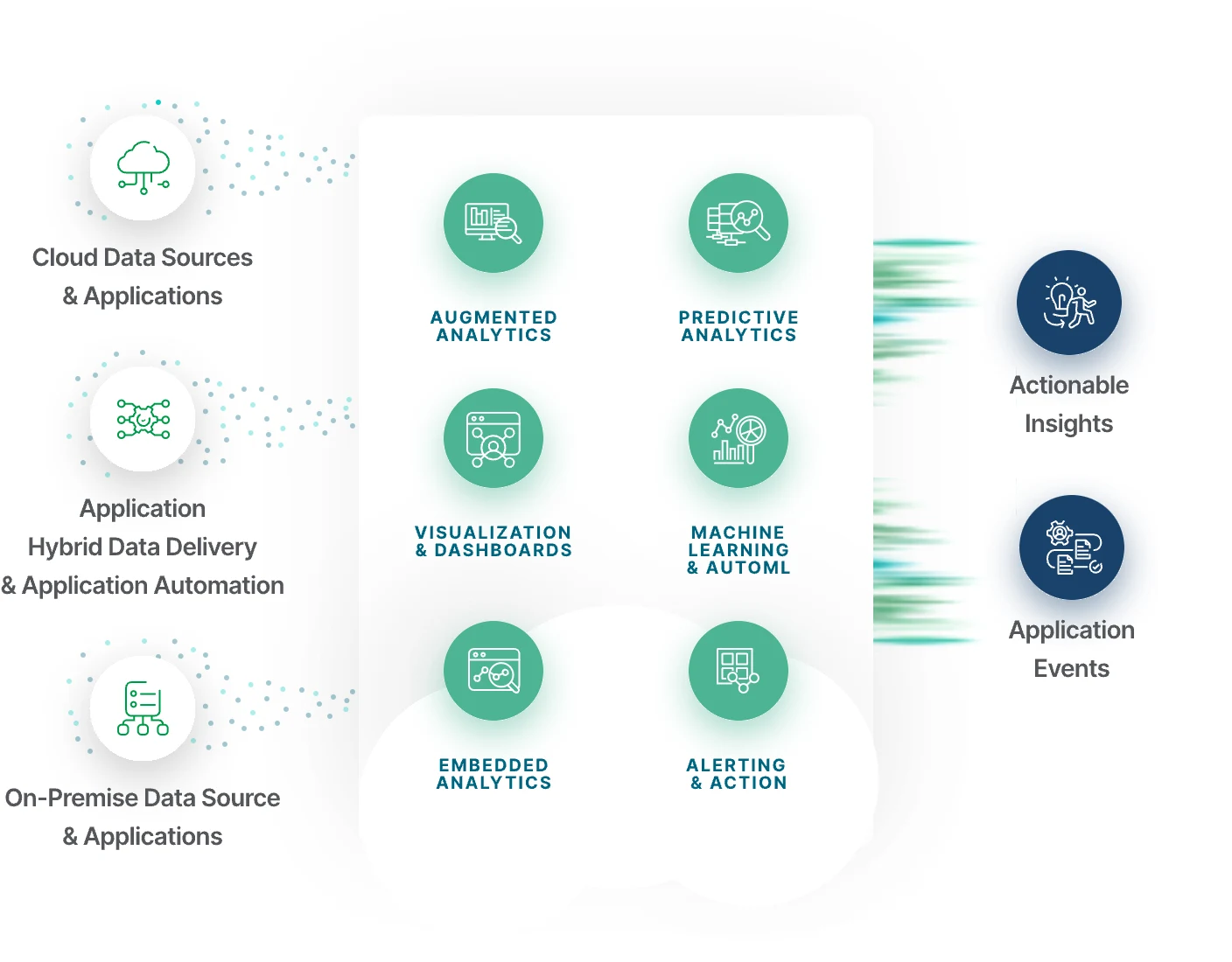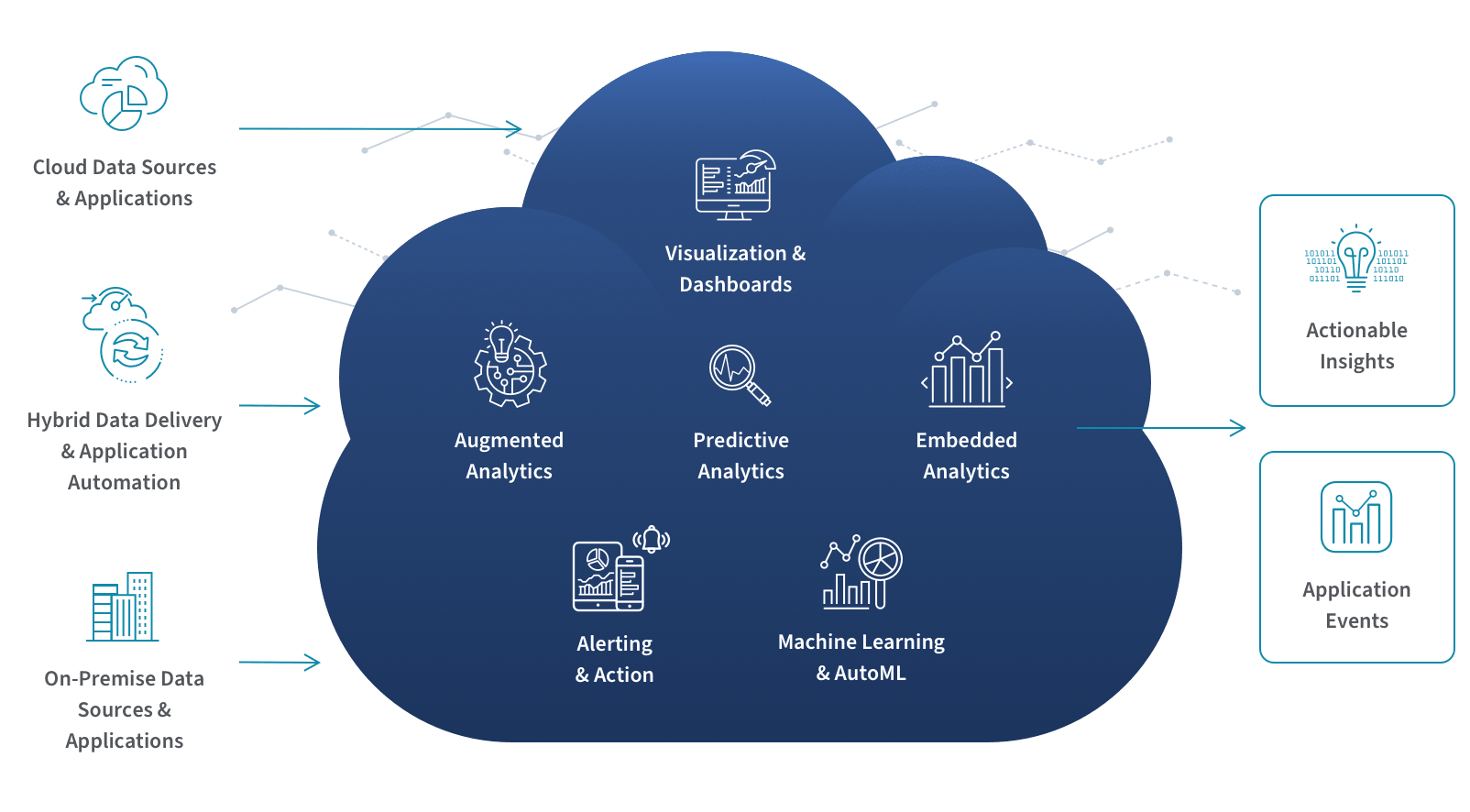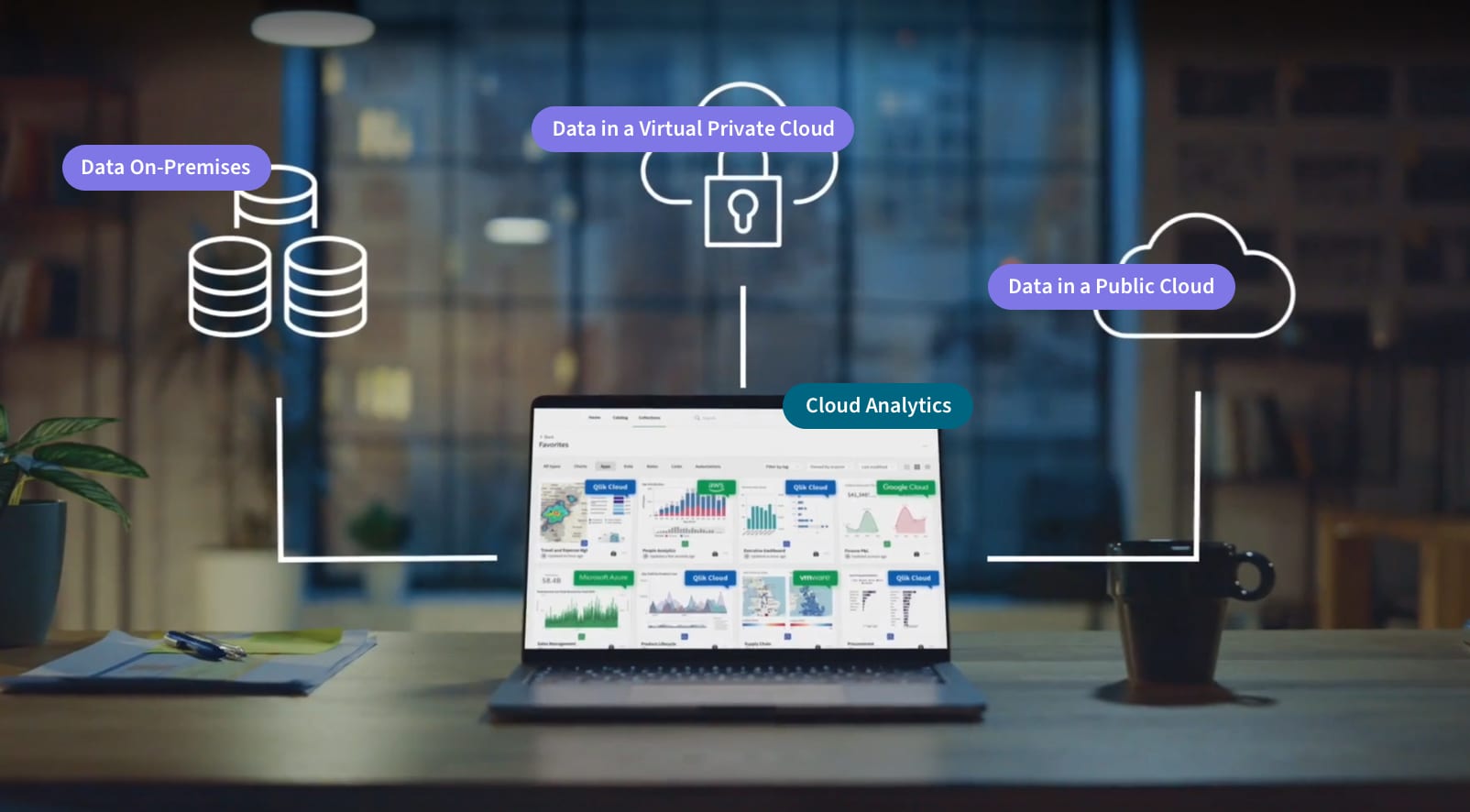Cloud Analytics Benefits
Now more than ever, businesses are choosing SaaS for modern analytics. That’s because today’s vastly increased appetite for data-informed agility, together with more distributed working practices, is demanding a shift away from on-prem solutions. And going forward, cloud computing for big data analytics will underpin the rapid innovation, collaborative analysis, and real-time insights that will characterize the next generation of decision-making.
Let’s dig deeper on the reasons why companies are moving their analytics processes to the cloud:
Lower Costs and Faster ROI: With cloud based analytics, you’ll reduce the risk that comes with making upfront hardware investments for on-premise servers. In addition, because you won’t need in-house expertise to maintain servers and software, you’ll cut even more costs.
Power Remote and Hybrid Work: The workplace has changed, and your distributed workforce, as well as your suppliers and partners, need immediate, governed access to fully interactive analytics from anywhere and on any device.
Easy Collaboration: The best cloud analytics platforms allow you to take snapshots of analytics, add commentary for improved context, and tag in the discussions. This creates a collaborative canvas for both real-time and asynchronous decision making.
Up-to-Date Capabilities: Updates and upgrades are performed automatically in cloud data analytics solutions. That means organizations save costs in the long run, as they don’t have to worry about ongoing maintenance associated with on-premise servers.
Flexible Performance: Rather than purchasing new hardware as your data needs change, cloud data analytics gives you the ability to turn services on and off as needed. For example, if you have a spike in data, you can quickly scale up your services, and then scale back down again when there’s less activity.
Reliability and Security: SaaS environments lower data security risk. First, the likelihood of error is far lower when servers aren’t manually configured. And second, SaaS security certifications require providers to meet stringent standards.
Centralized Data: When data is scattered and siloed across your CMS, ERP, marketing automation and countless other systems, it’s hard to get a complete view of your business. A cloud data analytics solution brings all of this data together to bring a complete picture of your business and maximize insights for everyone across the organization.
















































